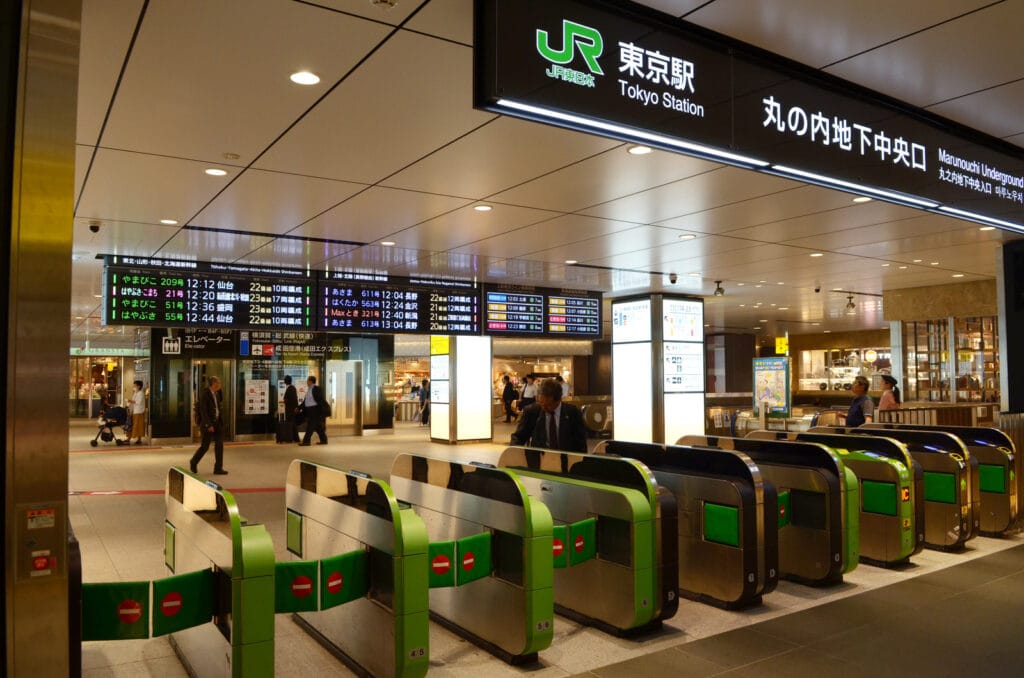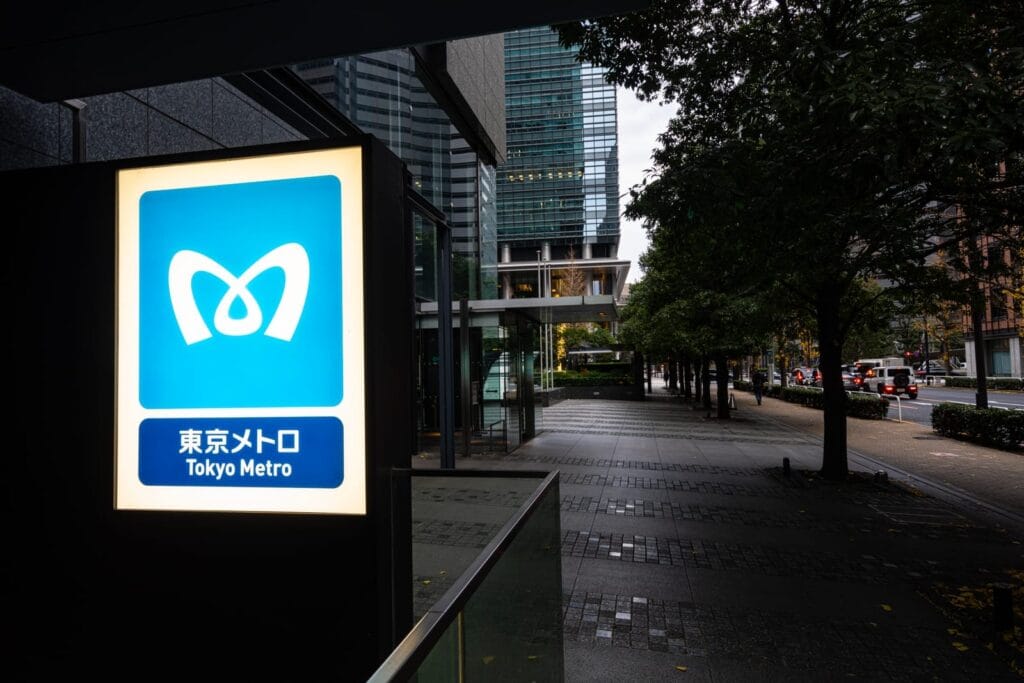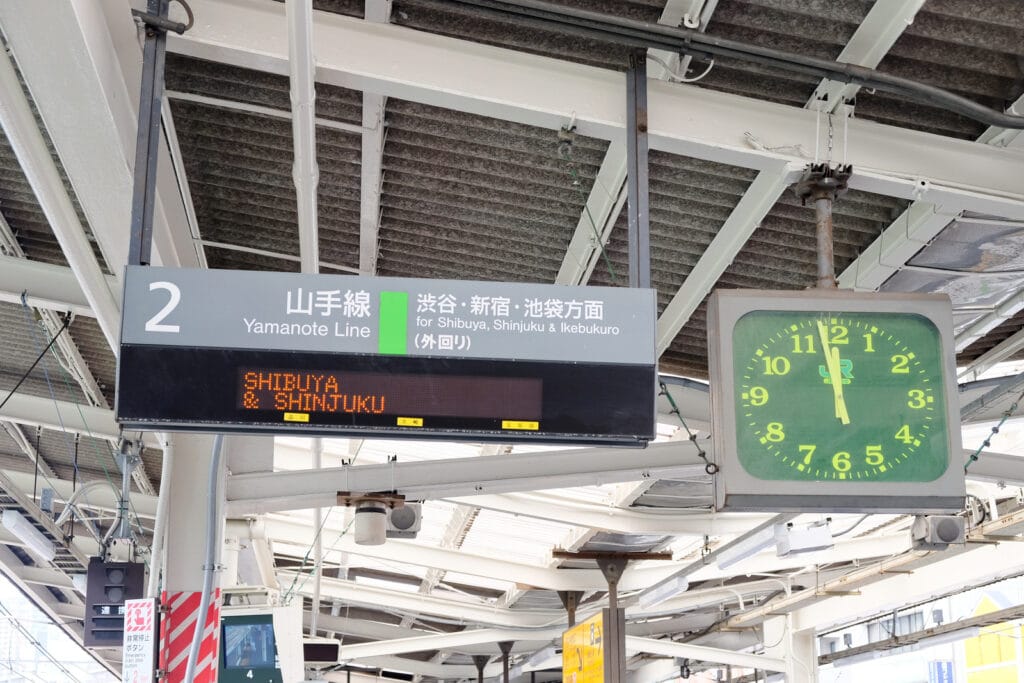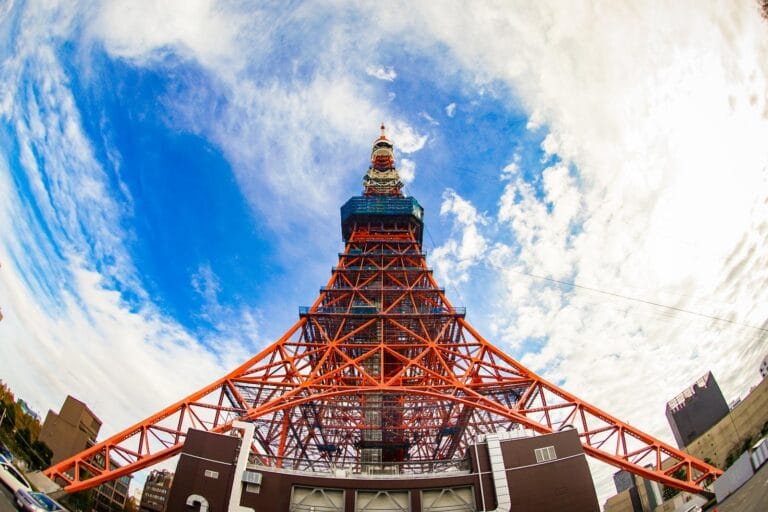Mastering Tokyo’s metro system is easier than you’d think! Start by understanding the letter-number station codes (like M-08 for Marunouchi Line) and color-coded lines that make navigation intuitive.
Grab a rechargeable IC card for ¥500 – it’s way more convenient than single tickets. Download the Tokyo Metro Subway app for real-time route planning and bilingual navigation support.
Learn the key transfer stations like Akihabara and Kita-Senju, giving yourself that essential 30-minute window for connections.
Finally, use Google Maps to pinpoint the right station entrances and platforms. With these strategies, you’ll navigate like a local in no time – let’s explore each step in detail.
1) Understand Station Numbering and Colors
Traversing Tokyo’s metro becomes remarkably simple once you grasp its intuitive station numbering and color-coding system.
Let me show you how it works: each station has a letter-number code that tells you exactly where you are. For instance, if you’re at Shinjuku Station on the red Marunouchi Line, you’ll see “M-08” – ‘M’ for Marunouchi, and ’08’ marking it as the eighth station on that line.
This system was inspired by JR East’s implementation in 2016, which revolutionized how travelers navigate Japanese railways.
Similar to the JR train network, the metro’s stations are strategically placed to connect major city hubs. Much like Japanese airports, the metro system prioritizes clear signage and efficient passenger flow.
Like the Shinkansen system, the metro maintains precise scheduling to ensure smooth transit operations.
The system’s efficiency mirrors the Japan Rail Pass service standards that millions of tourists rely on annually. Just as Osaka’s Midosuji Line connects major hubs, Tokyo’s metro lines create a comprehensive network for travelers.
I love how the color-coding makes everything pop! Each line has its distinct color that’s consistent across all maps and signs.
Plus, you’ll find everything written in four languages – Japanese, English, Chinese, and Korean. Trust me, even if you can’t read Japanese, you can navigate like a pro by following these simple codes and colors.
2) Choose Your Payment Method

Getting around Tokyo’s metro system is easier when you know your payment options. I’ll help you navigate the choices!
For hassle-free travel, I recommend getting a rechargeable IC card (PASMO or Suica) for ¥500. Just tap in and out at gates, and you’re good to go. You’ll need to use different tickets for Tokyo Metro and Toei services. Budget travelers can save significantly by planning their routes in advance.
Plus, you can use these cards at convenience stores and vending machines – pretty sweet! Similar to Japan Rail Pass, these cards simplify your journey through Japan’s extensive rail network.
Consider exchanging currency at local banks for better rates than tourist spots. First-time visitors should review basic etiquette rules before riding the metro. The IC card deposit is fully refundable when you return your card at station offices.
If you’re visiting briefly, consider a tourist pass. The Common One-day Ticket (¥1,000) gives you unlimited subway access.
For longer stays, grab a 24-, 48-, or 72-hour pass – just remember to bring your passport.
Single-trip tickets work too, starting at ¥180, but they’re less convenient.
And here’s exciting news: by 2024, you’ll be able to tap your credit card directly at the gates!
3) Plan Your Travel Route

Planning your Tokyo metro route might seem challenging at first, but I’ll show you how to make it simple and stress-free.
Start by downloading the Tokyo Metro Subway app – it’s your new best friend in traversing the city’s 180 stations across 9 Metro lines and 4 Toei lines!
You’ll want to avoid the infamous rush hours (7:30-9:30am and 5:30-7:30pm) unless you’re keen to experience Tokyo’s famous “pushers” in action.
Trust me, it’s quite a sight, but not ideal when you’re trying to enjoy your journey! The app’s step-by-step guides make station changes incredibly straightforward.
Use the app’s bilingual features to plan your route, even offline. I love how it shows station numbers in colored circles – it’s like following a subway treasure map!
Remember to check transfer points and walking shortcuts; sometimes a quick stroll between stations beats waiting for the next train.
4) Master Line Transfers
Now that you’ve got your route planned, let’s focus on mastering line transfers – the key to smooth Tokyo metro travel.
Remember this golden rule: you’ve got 30 minutes to complete any transfer before extra charges kick in! Key transfer stations like Akihabara and Kita-Senju connect multiple lines, but don’t let their size intimidate you. Station staff are available at all transfer points to help with your questions.
I always keep my IC card ready and follow the color-coded signs – they’re your best friends in these maze-like stations.
Here’s my pro tip: some transfers require walking up to 1 km between platforms (looking at you, Akihabara station!), so factor in extra time.
When connecting between Tokyo Metro and Toei lines, you’ll save 70 yen by using designated transfer gates. Think of it as a small reward for maneuvering the system like a local!
5) Navigate Station Layouts Effectively

A maze of colored lines and numbers might seem intimidating at first, but Tokyo’s station layout system is beautifully logical once you understand its code.
I’ll show you how to crack it! Each line has its own letter (like M for Marunouchi) and color-coded station numbers (such as M-15 for Kasumigaseki).
When maneuvering larger stations, I always rely on Google Maps to find the right entry point – trust me, it’ll save you from that “wrong entrance” marathon! The visual reference helps you navigate through the 285 stations across Tokyo’s network.
The app highlights correct entrances in yellow and even shows you which platform you’ll need. For mega-stations like Shinjuku or Shibuya, this is a game-changer.
Remember to factor in some extra walking time, especially during rush hour. Think of it as your personal subway treasure map, leading you straight to your destination!




